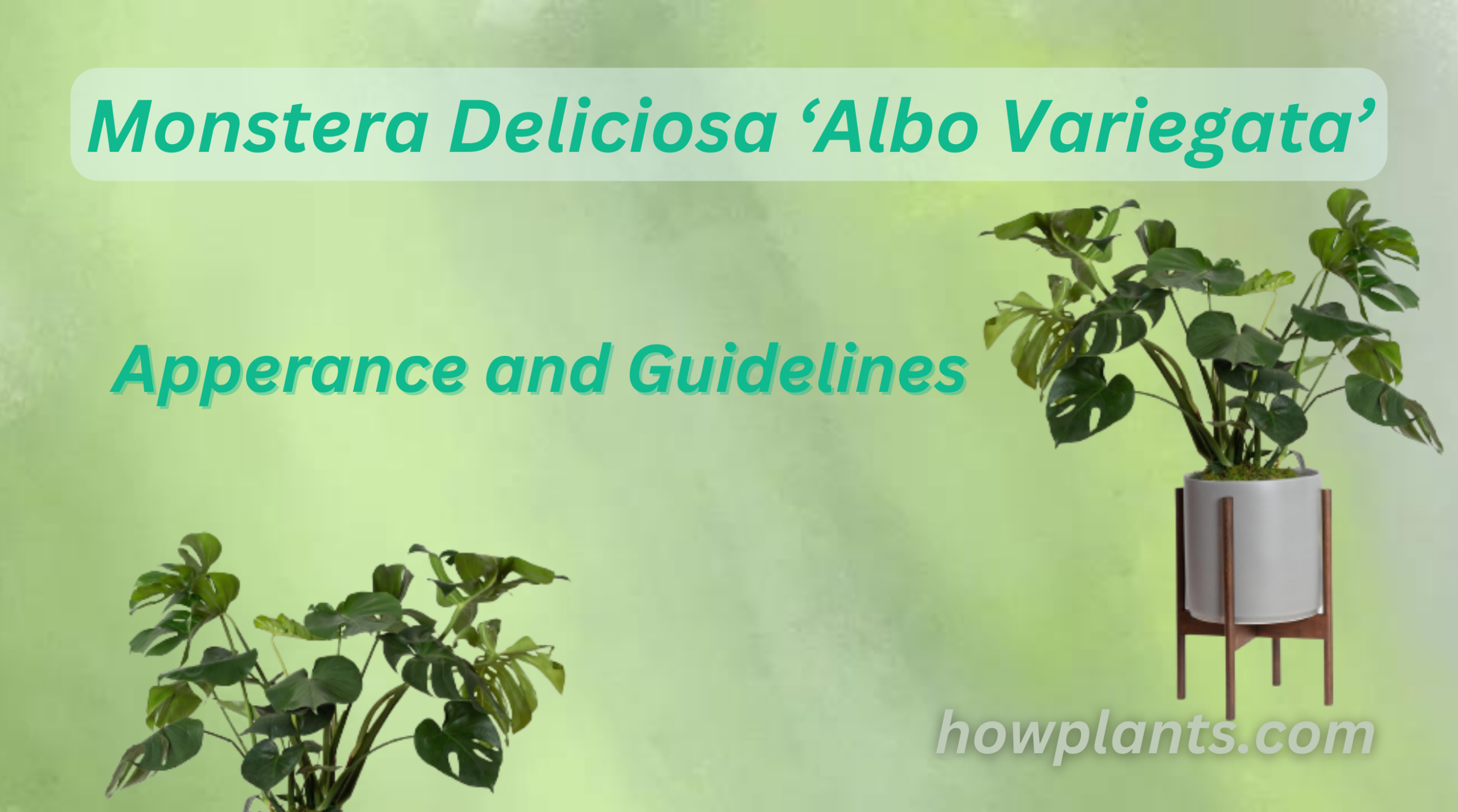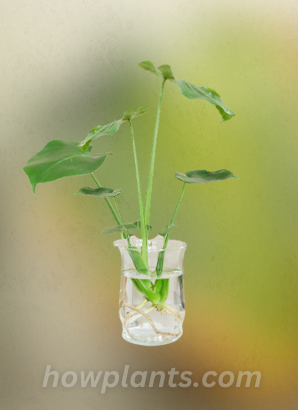If you’re looking for a unique and exotic houseplant that will give tropical touch to your home, Monstera Deliciosa Albo Variegata is the perfect choice. This beautiful plant has variegated white and green leaves and looks great in any living space. This tropical plant is native to Central America, and it’s well-known for its glossy, heart-shaped leaves with beautiful white or yellow variegation. It’s relatively easy to care for with proper knowledge, making it an ideal choice for those just starting out with houseplants. With the right techniques you can ensure that your plant stays healthy and beautiful for many years to come. Caring for a Monstera Deliciosa Albo Variegata can be easier than you think.
This article provides some background knowledge about the origin of Monstera Deliciosa Albo Variegata and a comprehensive guideline to growing Monstera Deliciosa Albo Variegata plants. It covers all the necessary requirements, such as soil type, watering amounts, light levels, and fertilizer information.
What are Monstera Deliciosa Albo Variegata?
Monstera Deliciosa Albo Variegata is a beautiful, variegated plant that is becoming increasingly popular in households around the world. It is known for its large, glossy leaves with white variegation and a split leaf design.It is well known for its stunning white-variegated leaves with random splashes of green throughout them. As this magnificent plant grows, it develops deep lobes and splits in its leaves, creating a unique foliage pattern that makes it a popular choice among houseplant enthusiasts This plant has become increasingly popular as a houseplant in the last few years due to its beautiful foliage and easy care requirements. Achieving success with this plant requires dedication and patience, but it can be done
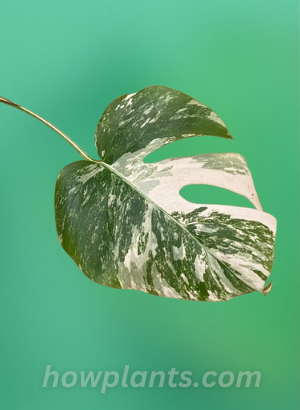
Monstera Albo Plant’s Origin
Monstera albo is an evergreen tropical climber that is native to Central America.Also known as ‘White Variegated Monstera’ or ‘Albo Borsigiana’, this plant originated in Mexico and Guatemala where it grows naturally as an epiphyte clinging to trees, rocks or other plants. It can be found climbing up tall trees in humid rainforests, usually at higher elevations of 1000-1800 meters. In their natural habitat Monstera albo can be found growing on trees in jungles and rainforests. They take advantage of the humidity and prefer more shaded areas so they don’t get too much direct sun exposure. This type of environment provides them with plenty of moisture, which helps keep their soil rich and hydrated.
Appearance Monstera Albo Leaves
Shape of Leaf
It has a distinct leaf shape that not many other Monsteras have. The leaves of this variety are white and green with large splotches of white, giving it an eye-catching look. They’re shaped like a heart or teardrop, which makes it stand out from other species in the genus.
Monstera Albo’s heart-shaped leaves are an excellent addition to any plant collection. Not only do they look lovely, but they also require minimal care and can tolerate low light levels and humidity fluctuations better than regular Monsteras. When cared for properly, these plants will produce more beautiful foliage with interesting shapes that make them stand out among other types of houseplants.
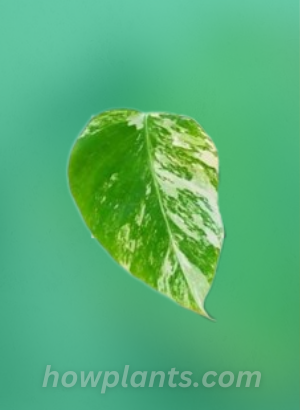
Foliage
Its most distinguishing feature is its creamy white patches on the leaves, and many people wonder why these patches form. The reason for this phenomenon is due to a mutation in the plant’s chloroplasts, which are responsible for photosynthesis. These mutations cause an interruption in pigmentation patterns on the leaves, resulting in areas that lack green pigment and instead display a bright, creamy white coloration. It’s not uncommon for Monstera albo varieties to have their unique patchwork across their foliage; some can even look almost entirely white.
Although the creamy white patches may be aesthetically pleasing, they also indicate that Monstera albo requires extra care from its owner. Because Monstera albo lacks the chlorophyll necessary for photosynthesis, it relies on its neighbors to provide nutrients and absorb sunlight. This means that it must be kept in a pot with other plants or else it will slowly starve to death.
Flowers Appearance
This species of monstera produces dark green leaves with white spots, and beautiful cream-colored flowers that give off a faint scent. Moreover, the blooms have a unique shape, with petals that are slightly pointed at their tips and surrounded by thin yellow rings. The combination of these colors gives the flower an eye-catching appearance that can be quite stunning. Subsequently, if you provide your Monstera with the right environment, you can expect to see gorgeous flowers appear throughout its growing season.
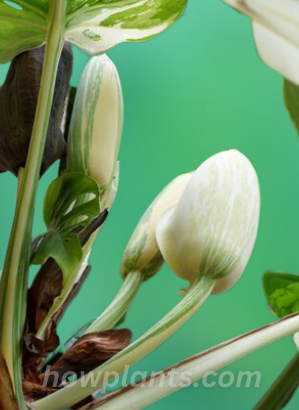
Average height
The average height of this lovely species is usually between 4-6 feet (1.2-1.8 meters). The size of each individual plant depends on the environment in which it’s grown. In optimal conditions with plenty of humidity and moisture, as well as warm temperatures and bright indirect light, these plants can reach their full potential – growing up to 6 feet tall or taller! For those that want to keep their plant compact, they can prune off any new growth or simply leave it alone – allowing it to naturally fill out its pot without becoming overly large.
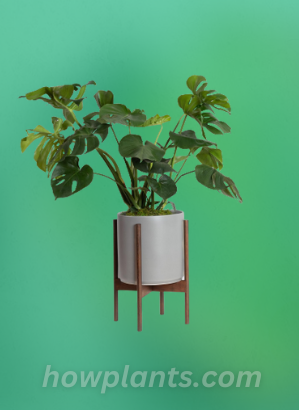
Rate of Growth of Variegata Plant
While the rate of growth for this particular species may vary depending on individual care practices, understanding its general growth rate can help you create the ideal environment for your plant.
This type of Monstera generally grows very slowly and takes many years to reach full maturity. It prefers bright, indirect light with plenty of humidity in order to thrive—conditions which will encourage slow but steady growth over time. Watering should also be done carefully; too much or too little water can impede the plant’s progress significantly.
Fragrance of Monstera Albo
Not only does the Monstera Albo look stunning, but it also has an unforgettable aroma. Its fragrance has been described as “sweet and earthy” with notes of citrus and herbs.
When the plant blooms in its natural environment, it releases a scent that has been likened to jasmine or honeysuckle. This heavenly aroma fills the air for miles around and can be experienced by anyone lucky enough to be close by. While this fragrant experience is not possible indoors, you can still enjoy the captivating smell of your Monstera Albo as you admire its showy foliage in your own home.
Best Pots for Monstera Albo
Types of pots used for Monstera Albo can be an important factor in the success of growing this beautiful variegated plant. Choose the pots that ensure proper drainage, so that extra water will be removed from the pot instead of causing harm to the plant. Plastic and Terracotta are two popular options, as they each offer their own unique benefits.
- Plastic pots generally have a lighter weight which makes them easier to move around. They also tend to retain moisture better than terracotta, which is beneficial for humid air-loving plants like Monstera Albo.
- Terracotta pots provide more breathability and help keep soil temperatures balanced, making them more suitable for dry air environments.
When to Repot Monstera Plant
When the roots of the Monstera albo become large enough that they protrude from the pot, it’s the time to repot your Monstera albo. Your Monstera albo is important for ensuring that it has enough space to grow its aerial roots and display new leaves without crowding itself out. It’s also important to maintain a healthy environment for your Monstera albo with regular repotting and timely watering. Whenever you go for reporting your Monstera albo make sure you will choose the pot that is two times wider and deeper than the previous pot.
Guidelines to take care of Monstera Plants
Monstera Deliciosa Albo Variegata is a popular houseplant known for its beautiful white variegated foliage and unique holes in the leaves. It is easy to care for, but it does require some specific attention to keep your plant healthy. This guide will provide you with all the steps necessary to properly take care of your Monstera albo plant.
Light Requirements
This beautiful plant requires light levels which range from low light to bright indirect sunlight in order to thrive. Although it can tolerate lower lighting conditions, not getting enough light may result in yellowing or pale leaves.
To give your Monstera albo the best chance at thriving, place it in a spot with bright indirect sunlight for two to three hours per day. As this species is native to tropical rainforests, avoid direct sunlight as it may burn the delicate foliage of the plant. If possible, put your plant near an eastern-facing window where only soft morning light will reach its leaves.
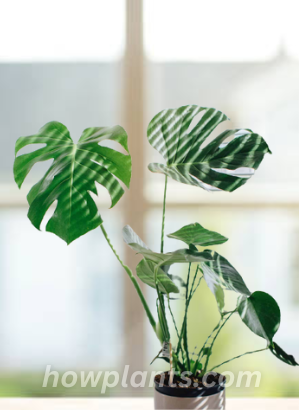
Water Requirement
However, one of the most important considerations when caring for this particular species is its water requirements. In order to ensure that your Monstera albo stays healthy and avoids premature senescence, it’s important to understand how much water it needs. With a few simple tips you can avoid over watering this tropical beauty. It’s essential to let the soil dry out between watering sessions and to always use lukewarm water.
Temperature and Humidity
When caring for Monstera albo, it is important to maintain consistent temperatures. This plant prefers warm temperatures between 65-80 degrees Fahrenheit (18-27 degrees Celsius). If possible, try to avoid placing this plant near air conditioning units or drafty windows as sudden changes in temperature can cause shock and stunted growth.
While some varieties of Monstera may tolerate lower temperatures during winter months, Monstera albo should not be exposed to anything below 50 degrees Fahrenheit (10 degrees Celsius). Generally speaking, it should be kept between 40-70% humidity levels in order for the plant’s leaves to remain vibrant and lush green in color.
Best Soil composition in Pots for growing Plant
To create the ideal soil mix, it’s important to consider all the various components of potting soil. Good quality potting soil should contain organic matter such as composted bark or peat moss, as well as perlite or vermiculite for aeration and drainage. It’s also helpful to add in some slow-release fertilizer to provide vital nutrients for your plant. The ratio of these components will depend on how much moisture and drainage your Monstera albo needs for optimal growth; generally, a slightly more moist medium with less drainage will work best for this species of houseplant.
pH of the soil for Monstera Albo
A significant factor in successful Monstera care is understanding the pH level of the soil. The pH of the soil determines how well nutrients are absorbed by your plant, so it’s crucial for growers to measure their soil’s acidity levels and adjust accordingly.
For Monstera Albo Variegata, a slightly acidic soil with a pH range between 6-6.5 is ideal as this helps promote nutrient absorption in your plant while avoiding toxicity or deficiency problems.
Which fertilizer should we add into the soils for an ideal growth
The ideal fertilizer should contain nitrogen, phosphorus, potassium, magnesium and iron. Nitrogen is the most important of these minerals as it encourages healthy growth in foliage and root systems. Phosphorus helps with flowering while potassium supports photosynthesis and stress tolerance. Magnesium helps strengthen cell walls while iron helps produce chlorophyll which gives plants their green coloring.
How and when Prune Monstera Albo
The best time to prune your Monstera albo is early spring when it’s actively growing new leaves. When pruning, you’ll want to remove any dead or damaged foliage first as these can be conduits for disease. Then focus on shaping the plant by trimming off the longest stems using sharp shears or secateurs; this will help promote bushier growth in the future.
Different Methods and Ways to Propagate Plant
However, in order to keep this plant healthy, it’s important to know how to properly propagate it. Fortunately, there are several ways you can go about doing this! Read on for our guide on the best methods of propagating Monstera deliciosa Albo Variegata.
One method of propagation is through stem cuttings. To do this, take a stem cutting with at least two or three pairs of leaves and remove the lower pair of leaves so that only one set remains. Place the cut end into water or rooting medium until roots have grown and then repot it in soil.
How is Rooting of Albo plant done?
Rooting Monstera Albo plants can be done in three main ways: stem cutting, air layering, or water propagation. In stem cutting, one needs to cut the stem below the node and remove the leaves from that part of the stem before planting it into soil – making sure that two nodes are buried under the soil. Air layering is done by removing a piece of outer bark with a knife and covering it with moss and soil mix until roots start appearing out of it.
Rooting the cuttings in Water
In this Monstera Deliciosa Albo Variegata Care Guide, we will look at how to root a cutting of the albo variegata in water. First, you must select the right cutting. It should have two or more leaves and a single stem node with healthy white roots attached. Cut off any excess foliage and place the cutting into a clean container of fresh water, making sure that all roots are well-submerged in the liquid. Change or refresh the water every few days and make sure it remains clean by washing out dirt or debris if necessary. Additionally, it is important to put your container in an area with bright but indirect light for best results.
Rooting the cuttings in Sphagnum Moss
For those looking to propagate their own Monstera albo plant, rooting a cutting in sphagnum moss is the way to go. This guide will take you through the process of rooting your Monstera albo cutting in sphagnum moss and provide some tips on how to care for it after it has been rooted. You’ll learn about the environment that this houseplant needs, as well as how much water and light it requires for optimal growth. With proper care, your new Monsteral Albo Variegata can bring beauty and lushness into your home for many years.
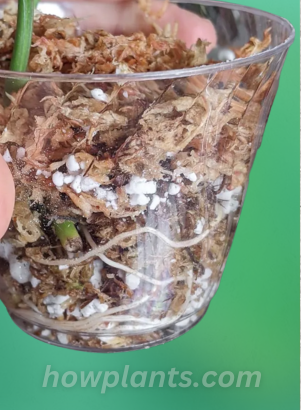
Rooting wet stick in Moss
For growers looking to cultivate a beautiful albo monstera of their own, rooting an albo monstera wet stick in moss can be an easy way to start. Rooting this type of Monstera is similar to caring for other types of propagation, but it requires specific conditions for success.
When rooting an albo monstera wet stick in moss, be sure to use high-quality peat-based potting soil or sphagnum moss that has been pre-moistened. A warm environment with adequate lighting will also promote growth and the development of roots. Be sure to position the stick away from direct sunlight; too much light can burn the leaves and stems, leading to damage and even death for your new plant.
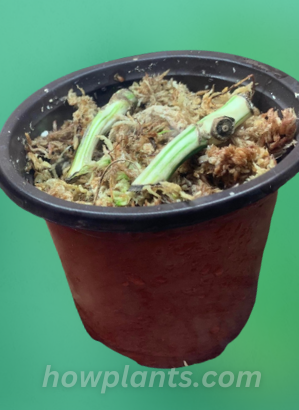
How to avoid Stem rotting during Propagating Plants
To begin, make sure to use a well draining potting mix when planting the cutting. A combination of soil and perlite works best to ensure the cuttings don’t become waterlogged and cause rot. Place your cutting in an area with bright yet indirect light, as too much sun may dry out the soil too quickly and cause it to die off. Water only when the top inch of soil appears dry, as overwatering is one of the most common causes of stem rot.
How to control diseases of Monstera Plants?
Common problems that may occur include root rot due to overwatering, fungal leaf spots caused by high humidity levels or insufficient air circulation, and powdery mildew which appears as a white film on the surface of leaves and stems. If left untreated these conditions could lead to leaf drop or even death of the plant. Fortunately, there are some steps you can take in order to prevent or treat these issues. For example proper watering techniques along with adequate light exposure will help keep your Monstera healthy.
Pests that Attacks Monstera Albo?
If you suspect your plant has been attacked by pests, it’s important to act quickly and take preventive measures to stop them in their tracks. Common pests that may attack Monstera albo include aphids, mealybugs, thrips and spider mites. Aphids are small and soft-bodied insects that cluster on leaves and stems of the plant. Mealybugs appear as white cottony masses near the stem joints or underside of leaves. Thrips are tiny black bugs with an elongated shape, while spider mites have red or yellowish bodies with long legs that spin webs between plant leaves.
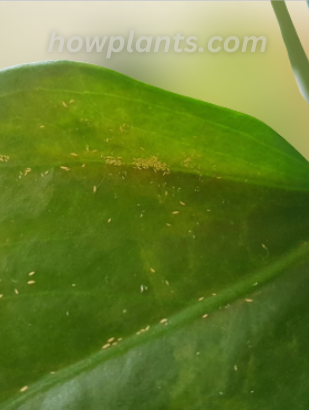
Best Pesticides for Monstera Albo
When it comes to pest control, it can be challenging to decide which pesticides are best for a Monstera albo. When dealing with pests on Monstera albo plants, the most effective way to get rid of them is by using chemical pesticides that specifically target the type of pest you’re dealing with. The most commonly used products include neem oil and insecticidal soap; both of which are safe to use around children and pets. For example, neem oil works as an effective deterrent against mealybugs, spider mites, aphids and other common plant pests.
Overwatering and Underwatering associated problems
Monstera albo is easy to care for, however, it’s important to understand the common issues associated with both overwatering and underwatering the plant. Too much or too little water can cause serious problems for your Monstera albo. Overwatering Monstera albo leads to root rot which stunts growth and turns leaves yellow or brown. To prevent this issue, check the soil of your plant before watering it. If the soil is still damp or wet to touch, wait until it has had a chance to dry out before adding more water. Underwatering can also be an issue as Monstera albo needs regular watering in order to thrive.
How to Avoid browning and yellowing of Monstera Leaves?
Monstera Deliciosa Albo Variegata is one of the most popular indoor plants, with its large white and green leaves. Unfortunately, some homeowners may find that their lovely Monstera albo leaves start to yellow or brown. If you want to keep your plant looking its best, there are several steps you can take to avoid such discoloration.
The first thing to consider when trying to prevent leaf discoloration is the amount of light your Monstera albo is receiving. Too much direct sunlight can cause yellowing and brown spots on the leaves. Make sure your plant gets indirect light for about 6 hours a day; if possible, adjust it so that it does not receive direct sunlight at all during this time. Additionally, be sure not to overwater your plant: too much water will also cause yellowing or browning of the leaves over time.
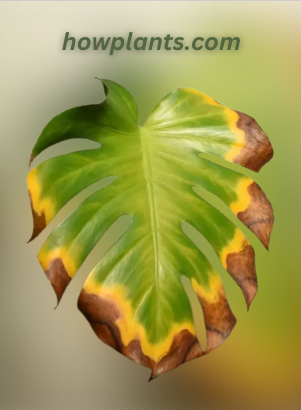
Why and How to maintain the proper drainage of Water in pots
If you want to keep this plant healthy and thriving, proper drainage of water is paramount. Without it, the roots can become damaged from too much moisture and cause root rot.
Adequate drainage ensures that the soil does not stay overly saturated with water which can lead to root rot or other problems caused by overwatering. Additionally, it helps prevent fungal growth due to excess moisture in the soil which can be detrimental to your plants health. Finally, having properly drained pots will help oxygenate the soil so that your plant remains healthy and happy.

Toxicity of Monstera Albo towards Human and Pet Animals?
If you’re looking for a unique and intriguing houseplant, look no further than the monstera deliciosa albo. These plants are prized for their distinct white and green variegated foliage – an eye-catching addition to any indoor space! Having a little extra knowledge of these plants can help you ensure they thrive in your home.
Summary
The best thing about Monstera Albo is that they are environmentally friendly, they absorb the impurities from the environment thus helping to control air pollution. By following guidelines you can take care of your Monstera Albo plants and enhance the beauty of your houses.
